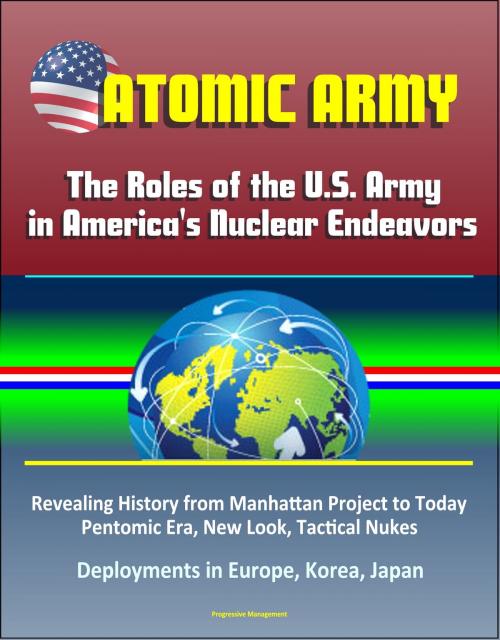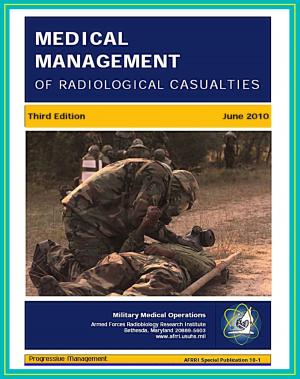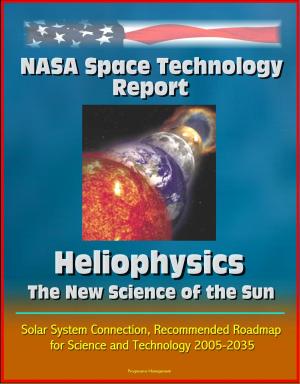Atomic Army: The Roles of the U.S. Army in America's Nuclear Endeavors - Revealing History from Manhattan Project to Today, Pentomic Era, New Look, Tactical Nukes, Deployments in Europe, Korea, Japan
Nonfiction, History, Military, Nuclear Warfare, United States| Author: | Progressive Management | ISBN: | 9781370238521 |
| Publisher: | Progressive Management | Publication: | March 17, 2017 |
| Imprint: | Smashwords Edition | Language: | English |
| Author: | Progressive Management |
| ISBN: | 9781370238521 |
| Publisher: | Progressive Management |
| Publication: | March 17, 2017 |
| Imprint: | Smashwords Edition |
| Language: | English |
This report has been professionally converted for accurate flowing-text e-book format reproduction. This study examines the roles of the U.S. Army in America's nuclear undertakings. Since 1942, when the Army took responsibility for managing the Manhattan Project, the Army has made many important contributions to America's nuclear endeavors. Its earliest nuclear roles included developing and employing America's first nuclear weapons, executing nuclear counterproliferation missions, investigating the effects of nuclear weapons, and supervising the U.S. atomic energy program. Although the Army's nuclear responsibilities were altered during the early years of the Cold War, it continued to participate in America's nuclear efforts. The Army's Cold War nuclear roles included deploying tactical nuclear weapons, participating in nuclear weapons tests, developing doctrine and reorganizing the Army's units in preparation for a nuclear war, managing a nuclear power program, contributing to the debate on national strategy, and helping to reassure U.S. allies and prevent the proliferation of nuclear weapons. Today, the Army continues to make important contributions to the nation's nuclear endeavors, notably in preparedness for attack forensics and consequence management. U.S. strategic planners must understand the several nuclear functions that the Army has performed throughout history in order to appreciate more fully the relevance of the Army's current nuclear capacities.
I. INTRODUCTION * A. MAJOR RESEARCH QUESTION * B. IMPORTANCE * C. PROBLEMS AND HYPOTHESES * D. LITERATURE REVIEW * E. METHODS AND SOURCES * F. THESIS OVERVIEW * II. ATOMS FOR WAR: THE U.S. ARMY'S ROLE IN THE MANHATTAN PROJECT * A. OVERVIEW OF THE MANHATTAN PROJECT: AN ARMY PERSPECTIVE * B. HISTORY OF THE MANHATTAN PROJECT: FAST MARCH TO THE BOMB * C. ARMY PERSONNEL AND ORGANIZATIONS WITHIN THE MED * 1. The Special Engineer Detachment * 2. The Women's Army Corps Detachment * 3. The Counterintelligence Corps Detachment * 4. The Manhattan Project Atomic Bomb Investigating Group * D. THE VIEWS OF THE SENIOR ARMY OFFICERS * E. CONCLUSION * III. THE U.S. ARMY'S COLD WAR NUCLEAR ROLES * A. THE ARMY'S FIGHT FOR NUCLEAR WEAPONS * B. TACTICAL NUCLEAR WEAPONS: THE ARMY'S SECOND NUCLEAR ARSENAL * 1. Nuclear Artillery * 2. Nuclear Missiles and Rockets * 3. Other Nuclear Devices * C. NUCLEAR EDUCATION * D. NUCLEAR TRAINING * E. NUCLEAR TESTING * F. NUCLEAR DOCTRINE * G. NUCLEAR DEPLOYMENTS * 1. Europe * 2. South Korea * 3. Japan * H. NUCLEAR POWER * I. VIEWS OF U.S. ARMY OFFICERS * J. CONCLUSION * IV. THE U.S. ARMY'S CONTEMPORARY NUCLEAR ROLES * A. REDEPLOYMENT AND ELIMINATION * B. THE VIEWS OF ARMY OFFICERS * C. THE ARMY'S CONTEMPORARY NUCLEAR ROLES * 1. Functional Area 52 (Nuclear and Counterproliferation) * 2. U.S. Army Nuclear and CWMD Agency * 3. 20th Chemical, Biological, Radiological, Nuclear, and Explosives Command * 4. Air and Missile Defense * D. CONCLUSION * V. CONCLUSION: THE ARMY'S NUCLEAR ROLES * A. HOW NUCLEAR WEAPONS HAVE CHANGED THE ARMY * B. FOR THE COMMON DEFENSE
This report has been professionally converted for accurate flowing-text e-book format reproduction. This study examines the roles of the U.S. Army in America's nuclear undertakings. Since 1942, when the Army took responsibility for managing the Manhattan Project, the Army has made many important contributions to America's nuclear endeavors. Its earliest nuclear roles included developing and employing America's first nuclear weapons, executing nuclear counterproliferation missions, investigating the effects of nuclear weapons, and supervising the U.S. atomic energy program. Although the Army's nuclear responsibilities were altered during the early years of the Cold War, it continued to participate in America's nuclear efforts. The Army's Cold War nuclear roles included deploying tactical nuclear weapons, participating in nuclear weapons tests, developing doctrine and reorganizing the Army's units in preparation for a nuclear war, managing a nuclear power program, contributing to the debate on national strategy, and helping to reassure U.S. allies and prevent the proliferation of nuclear weapons. Today, the Army continues to make important contributions to the nation's nuclear endeavors, notably in preparedness for attack forensics and consequence management. U.S. strategic planners must understand the several nuclear functions that the Army has performed throughout history in order to appreciate more fully the relevance of the Army's current nuclear capacities.
I. INTRODUCTION * A. MAJOR RESEARCH QUESTION * B. IMPORTANCE * C. PROBLEMS AND HYPOTHESES * D. LITERATURE REVIEW * E. METHODS AND SOURCES * F. THESIS OVERVIEW * II. ATOMS FOR WAR: THE U.S. ARMY'S ROLE IN THE MANHATTAN PROJECT * A. OVERVIEW OF THE MANHATTAN PROJECT: AN ARMY PERSPECTIVE * B. HISTORY OF THE MANHATTAN PROJECT: FAST MARCH TO THE BOMB * C. ARMY PERSONNEL AND ORGANIZATIONS WITHIN THE MED * 1. The Special Engineer Detachment * 2. The Women's Army Corps Detachment * 3. The Counterintelligence Corps Detachment * 4. The Manhattan Project Atomic Bomb Investigating Group * D. THE VIEWS OF THE SENIOR ARMY OFFICERS * E. CONCLUSION * III. THE U.S. ARMY'S COLD WAR NUCLEAR ROLES * A. THE ARMY'S FIGHT FOR NUCLEAR WEAPONS * B. TACTICAL NUCLEAR WEAPONS: THE ARMY'S SECOND NUCLEAR ARSENAL * 1. Nuclear Artillery * 2. Nuclear Missiles and Rockets * 3. Other Nuclear Devices * C. NUCLEAR EDUCATION * D. NUCLEAR TRAINING * E. NUCLEAR TESTING * F. NUCLEAR DOCTRINE * G. NUCLEAR DEPLOYMENTS * 1. Europe * 2. South Korea * 3. Japan * H. NUCLEAR POWER * I. VIEWS OF U.S. ARMY OFFICERS * J. CONCLUSION * IV. THE U.S. ARMY'S CONTEMPORARY NUCLEAR ROLES * A. REDEPLOYMENT AND ELIMINATION * B. THE VIEWS OF ARMY OFFICERS * C. THE ARMY'S CONTEMPORARY NUCLEAR ROLES * 1. Functional Area 52 (Nuclear and Counterproliferation) * 2. U.S. Army Nuclear and CWMD Agency * 3. 20th Chemical, Biological, Radiological, Nuclear, and Explosives Command * 4. Air and Missile Defense * D. CONCLUSION * V. CONCLUSION: THE ARMY'S NUCLEAR ROLES * A. HOW NUCLEAR WEAPONS HAVE CHANGED THE ARMY * B. FOR THE COMMON DEFENSE















